In Last Week’s Episode Of It’s Okay To Be Smart, I Talked About Why The Moon Orbits The Earth. If
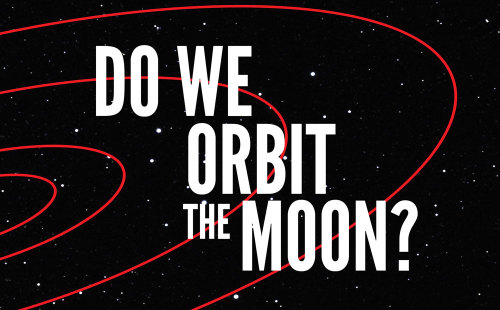



In last week’s episode of It’s Okay To Be Smart, I talked about why the moon orbits the Earth. If you haven’t watched it yet, give it a look. I’ll wait.
There’s some pretty interesting and counterintuitive astrophysics keeping the moon orbiting Earth and not getting gobbled up by the sun. But I left one thing out of that video. The moon doesn’t really orbit the Earth. Strictly speaking, the moon and the Earth orbit each other.
Just like the Earth exerts a gravitational force on the moon, the moon and its mass are “tugging” right back on us. As a result, the two bodies are actually orbiting a point in between, called the barycenter.
If you’ve ever watched pairs figure skating, you’ve seen this in action. When spinning through this move, called a “death spiral”, the two skaters are actually rotating around a barycenter in between their two centers of mass:

This is true of any two orbiting objects, whether it’s a pair of binary stars, a planet and its star, or a planet and its moon(s). You can think of it just like a playground see-saw, with the masses and distance between the two orbiting objects determining where the “balance” point is.
The Earth/Moon barycenter is about 1,700 km beneath the crust:
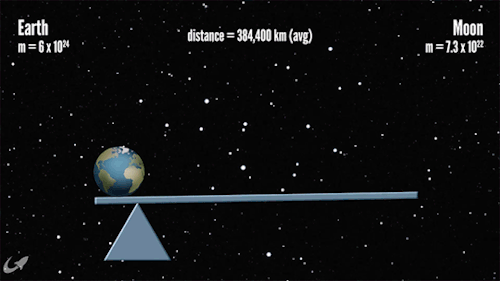
Jupiter, despite being more than five times farther from our central star than Earth is, is so massive that its barycenter lies outside of the Sun:

The Earth-Sun barycenter, on the other hand, is effectively in the center of the sun. Our mass is just peanuts compared to that of that huge burning ball of hot gas:
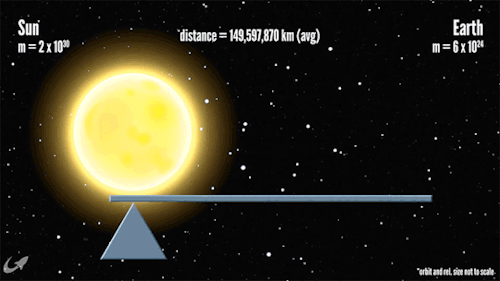
When two orbiting bodies have similar masses and are relatively close to each other, it can be tough to figure out who’s orbiting whom. This is one reason that some astronomers think Pluto and its moon Charon are more of a double-dwarf-planet system:
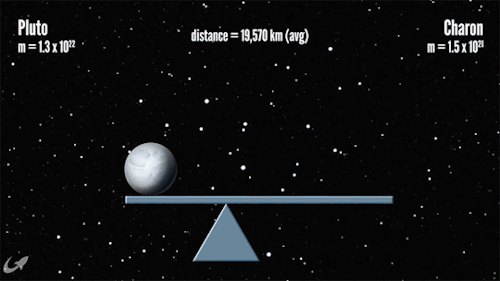
Scientists use the see-saw physics of barycenters to study planets in distant solar systems, observing these wobbly waltzes to discover planets that we can’t see with telescopes.
The dig deeper into this cool bit of astrophysics, check out this article from my friend Chris Crockett. And cue the Dead or Alive…
More Posts from Allisonkitten and Others
Neil knows what's up






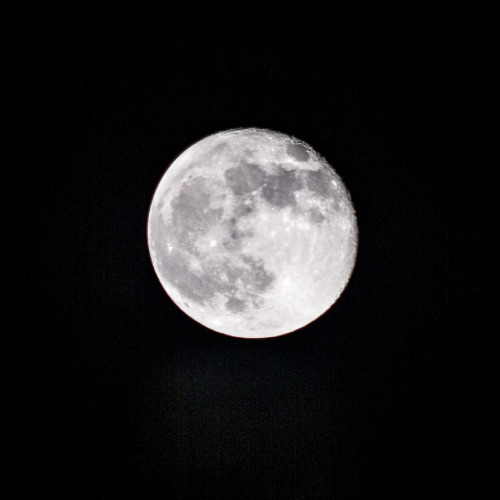

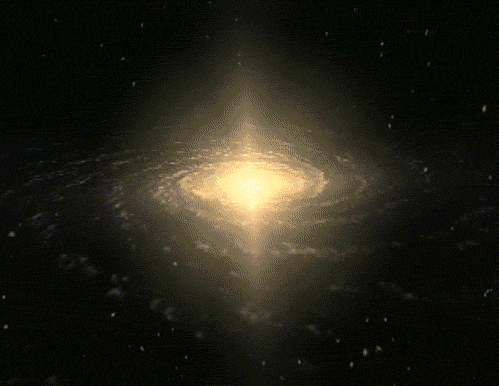
Celestial Wonders- Binary Stars (#1)
The twins of the stellar world are binary star systems.
A binary star is a star system consisting of two stars orbiting around their common center of mass.
When two stars appear close together in the sky as seen from the Earth when viewed through an optical telescope, the situation is known as an “optical double”.
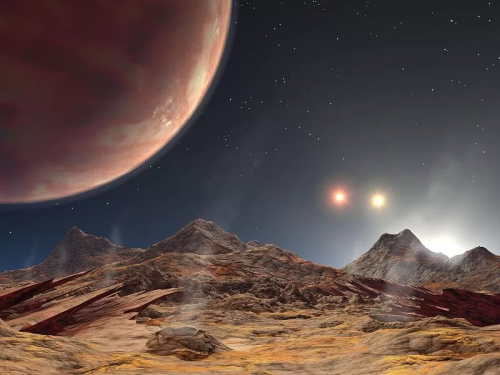
This means that although the stars are aligned along the same line of sight, they may be at completely different distances from us. This occurs in constellations; however, two stars in the same constellation can also be part of a binary system
Why study Binary stars ?
Binary star systems are very important in astrophysics because calculations of their orbits allow the masses of their component stars to be directly determined, which in turn allows other stellar parameters, such as radius and density, to be indirectly estimated.
This also determines an empirical mass-luminosity relationship (MLR) from which the masses of single stars can be estimated.
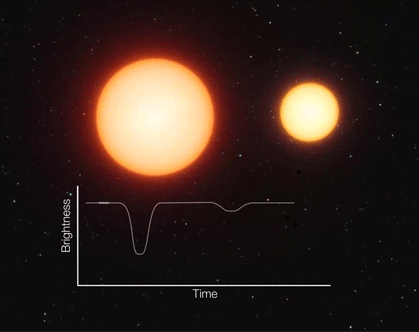
Also,it is estimated that 75% of the stars in the Milky Way galaxy are not single stars, like the Sun, but multiple star systems, binaries or triplets.
The Brightest star in the sky is a binary.
This is true. Sirius (aka the Dog star) - the brightest star in the sky is actually a binary star system.
When it was discovered in 1844 by the German astronomer Bessel, the system was classed as an astro-metric binary, because the companion star, Sirius B, was too faint to be seen.
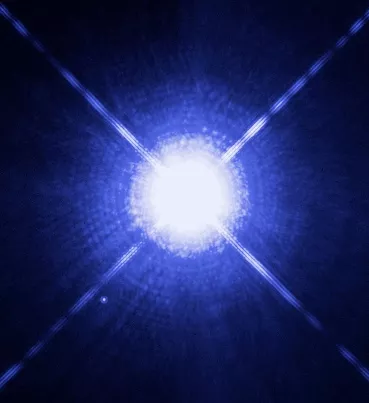
Bessel, who was also a mathematician, determined by calculations that Sirius B existed after observing that the proper of Sirius A (the main star) followed a wavy path in the sky, rather than a uniform path.
Sirius can now be studied as a visual binary because, with improving technology and therefore improved telescopes, Sirius B was able to be seen, although not for 20 years after Bessel had correctly predicted its existence.

Black Holes in a binary system ?
Hell Yeah! The term “binary system” is not used exclusively for star systems, but also for planets, asteroids, and galaxies which rotate around a common center of gravity.
However, this is not a trick question; even in star binaries, the companion can be a black hole.
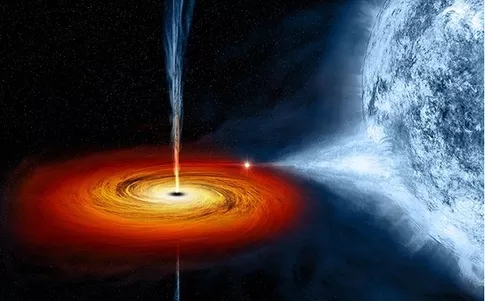
An example of this is Cygnus X-1.
A binary Black Hole system ?
Definitely! A binary black hole (BBH) is a system consisting of two black holes in close orbit around each other.
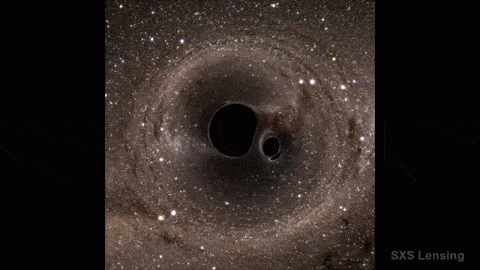
In fact the LIGO experiment which confirmed the existence of Gravitational waves was able to acquire its data when two Binary Black Holes Collided and merged into one. This phenomenon sent ripples in the fabric of space-time which we call as a Gravitational Wave.
The Universe is amazing huh?
If you found this interesting, check out:
A Denied stardom status - Jupiter
Black Holes are not so Black (Part 3) - Gravitational Waves

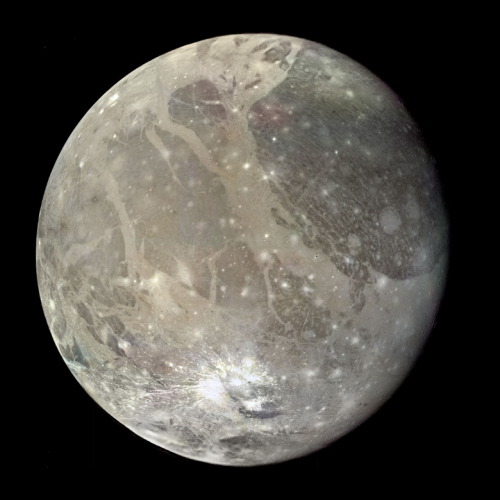
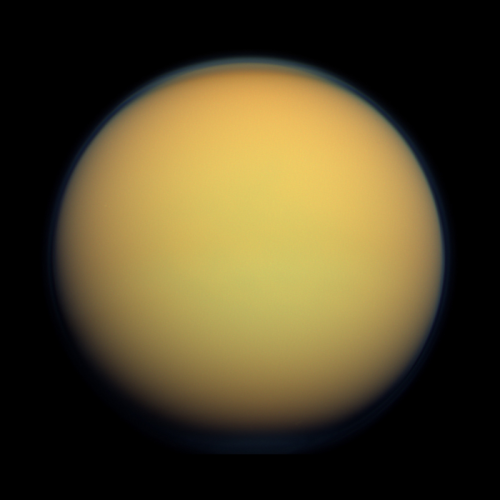
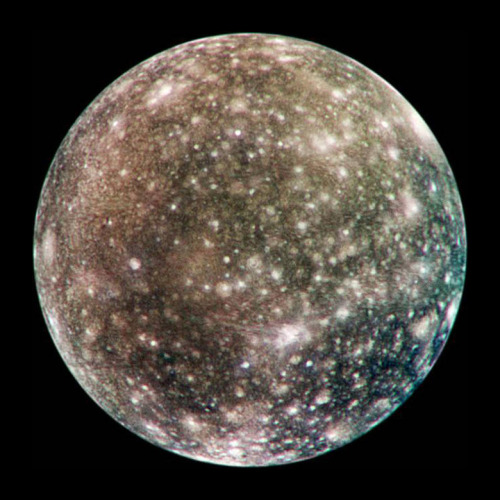
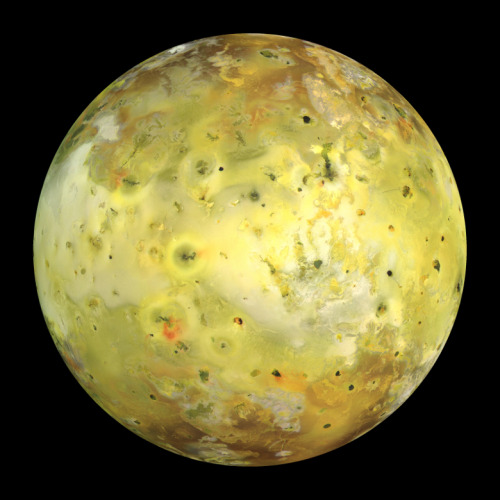
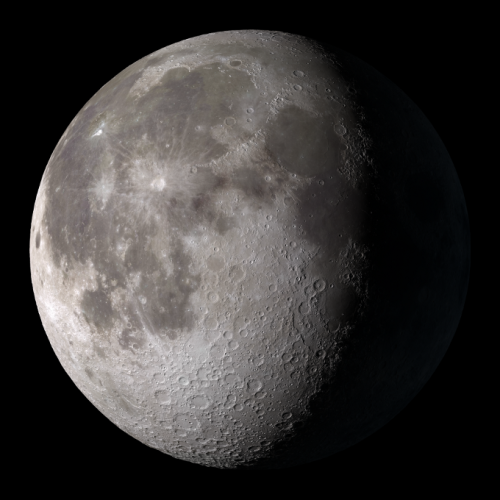
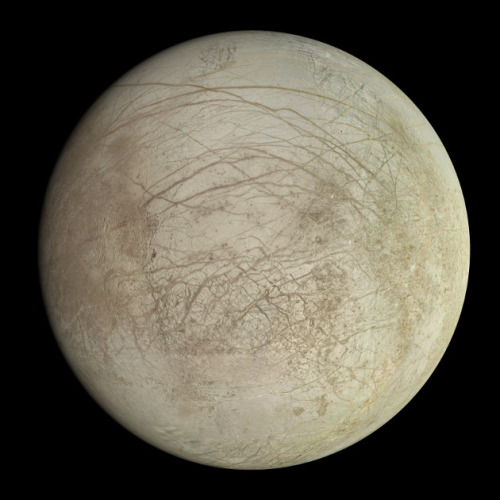
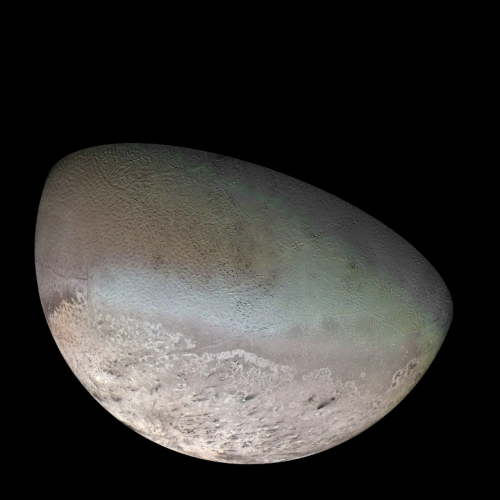
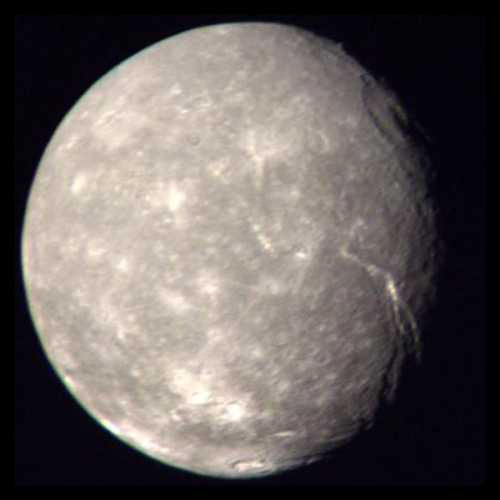
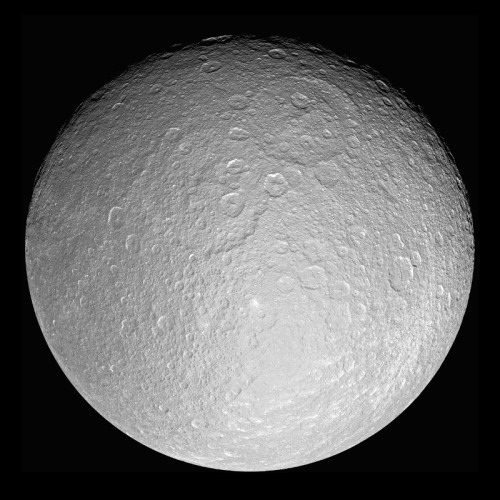
The Largest Moons in the Solar System
Ganymede: Orbits Jupiter, Diameter 5,262 km
Titan: Orbits Saturn, Diameter 5,150 km
Callisto: Orbits Jupiter, Diameter 4,821 km
Io: Orbits Jupiter, Diameter 3,643 km
The Moon: Orbits Earth, Diameter 3,475 km
Europa: Orbits Jupiter, Diameter 3,122 km
Triton: Orbits Neptune, Diameter 2,707 km
Titania: Orbits Uranus, Diameter 1,578 km
Rhea: Orbits Saturn, Diameter 1,529 km










Niles, my spiritual guide, my idol
somewhere out there, there’s a star born the exact same day and time as you were


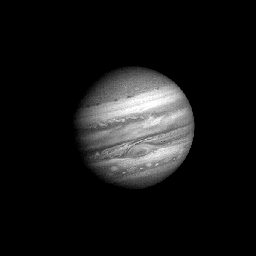
Time lapse of Voyager 1′s approach to Jupiter
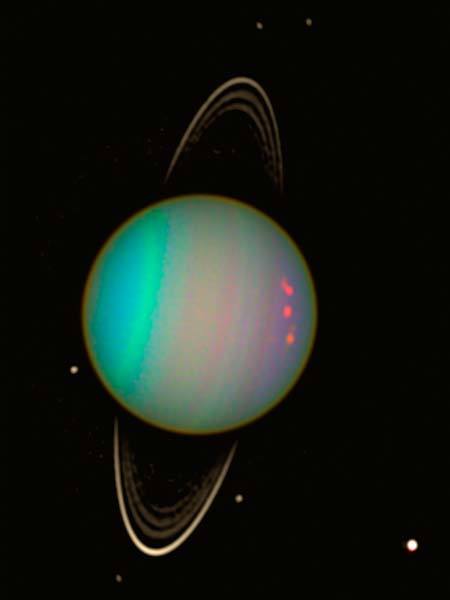
Rings and Moons Circling Uranus, taken by Hubble space telescope.
js
-
 ridazzle reblogged this · 2 years ago
ridazzle reblogged this · 2 years ago -
 ridazzle liked this · 2 years ago
ridazzle liked this · 2 years ago -
 klakokum reblogged this · 2 years ago
klakokum reblogged this · 2 years ago -
 andrejupiter liked this · 4 years ago
andrejupiter liked this · 4 years ago -
 imperiumwifestrikesagain reblogged this · 5 years ago
imperiumwifestrikesagain reblogged this · 5 years ago -
 simplygreenie liked this · 6 years ago
simplygreenie liked this · 6 years ago -
 theartymoose reblogged this · 6 years ago
theartymoose reblogged this · 6 years ago -
 theartymoose liked this · 6 years ago
theartymoose liked this · 6 years ago -
 raspberry-jazz liked this · 6 years ago
raspberry-jazz liked this · 6 years ago -
 imaheckincyborg reblogged this · 6 years ago
imaheckincyborg reblogged this · 6 years ago -
 astral-eclipse liked this · 6 years ago
astral-eclipse liked this · 6 years ago -
 myworstdays liked this · 6 years ago
myworstdays liked this · 6 years ago -
 alexanderreaderp liked this · 6 years ago
alexanderreaderp liked this · 6 years ago -
 blackrigante reblogged this · 6 years ago
blackrigante reblogged this · 6 years ago -
 monty-madam-witch liked this · 6 years ago
monty-madam-witch liked this · 6 years ago -
 aerophone-amphibians reblogged this · 6 years ago
aerophone-amphibians reblogged this · 6 years ago -
 aerophone-amphibians liked this · 6 years ago
aerophone-amphibians liked this · 6 years ago -
 i-am-simply-here liked this · 6 years ago
i-am-simply-here liked this · 6 years ago -
 divermarv liked this · 6 years ago
divermarv liked this · 6 years ago -
 areyousaltingmynuts reblogged this · 6 years ago
areyousaltingmynuts reblogged this · 6 years ago -
 godmodliving liked this · 6 years ago
godmodliving liked this · 6 years ago -
 tulikettu reblogged this · 6 years ago
tulikettu reblogged this · 6 years ago -
 drawnecromancy liked this · 6 years ago
drawnecromancy liked this · 6 years ago -
 ishgard liked this · 6 years ago
ishgard liked this · 6 years ago -
 voidlordfebreze reblogged this · 6 years ago
voidlordfebreze reblogged this · 6 years ago -
 seriouscuttervoice reblogged this · 6 years ago
seriouscuttervoice reblogged this · 6 years ago -
 morallygreywarden liked this · 6 years ago
morallygreywarden liked this · 6 years ago -
 genocider-syo-is-still-my-queen liked this · 6 years ago
genocider-syo-is-still-my-queen liked this · 6 years ago -
 lizbug3710 liked this · 6 years ago
lizbug3710 liked this · 6 years ago -
 z-meme-h liked this · 6 years ago
z-meme-h liked this · 6 years ago -
 1yin1yang1madhatter liked this · 6 years ago
1yin1yang1madhatter liked this · 6 years ago -
 roadbricksilver reblogged this · 6 years ago
roadbricksilver reblogged this · 6 years ago -
 publicmilky liked this · 6 years ago
publicmilky liked this · 6 years ago -
 piola970 reblogged this · 6 years ago
piola970 reblogged this · 6 years ago -
 piola970 liked this · 6 years ago
piola970 liked this · 6 years ago -
 triplatela liked this · 6 years ago
triplatela liked this · 6 years ago -
 sabrinaonmymind liked this · 6 years ago
sabrinaonmymind liked this · 6 years ago -
 tulletante reblogged this · 7 years ago
tulletante reblogged this · 7 years ago -
 istrugglewithphilosophy liked this · 7 years ago
istrugglewithphilosophy liked this · 7 years ago -
 justperfect11 liked this · 7 years ago
justperfect11 liked this · 7 years ago
Just a socially awkward college student with an interest in the celestial bodies in our universe.
279 posts